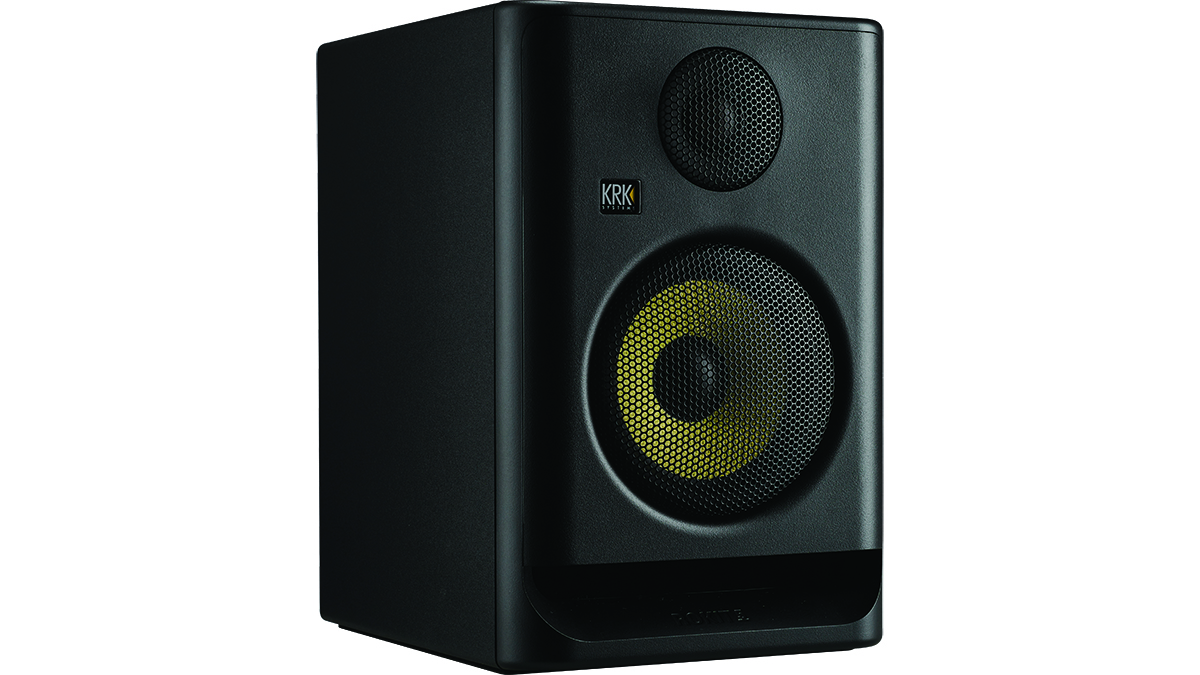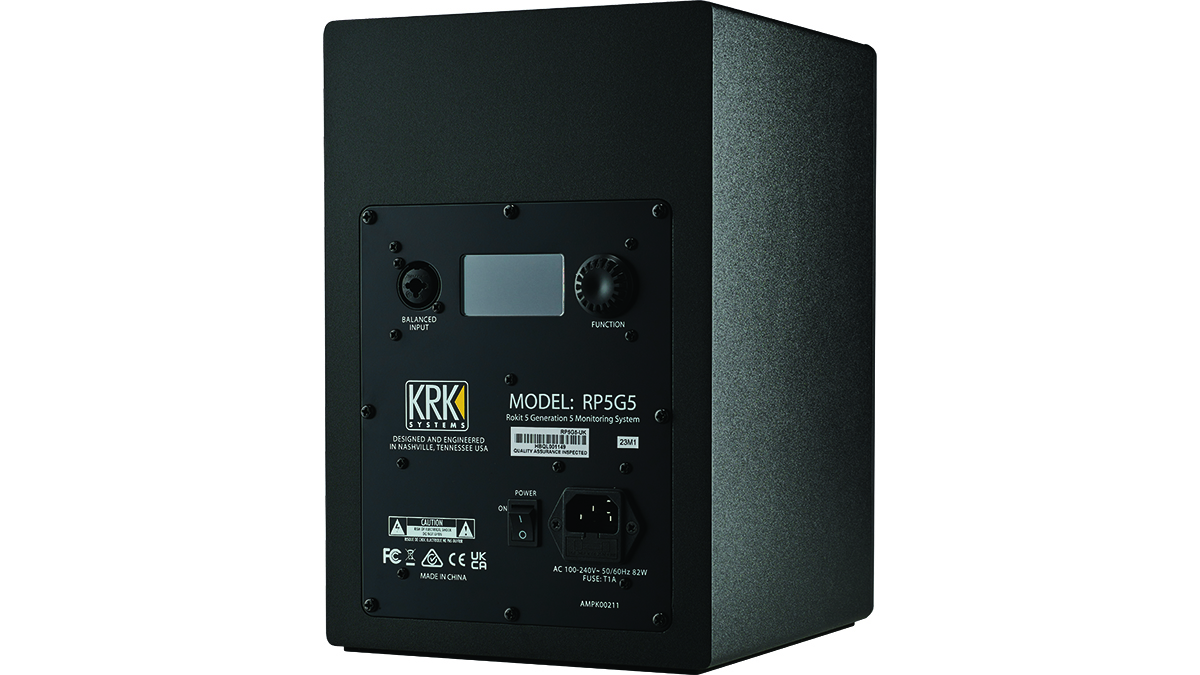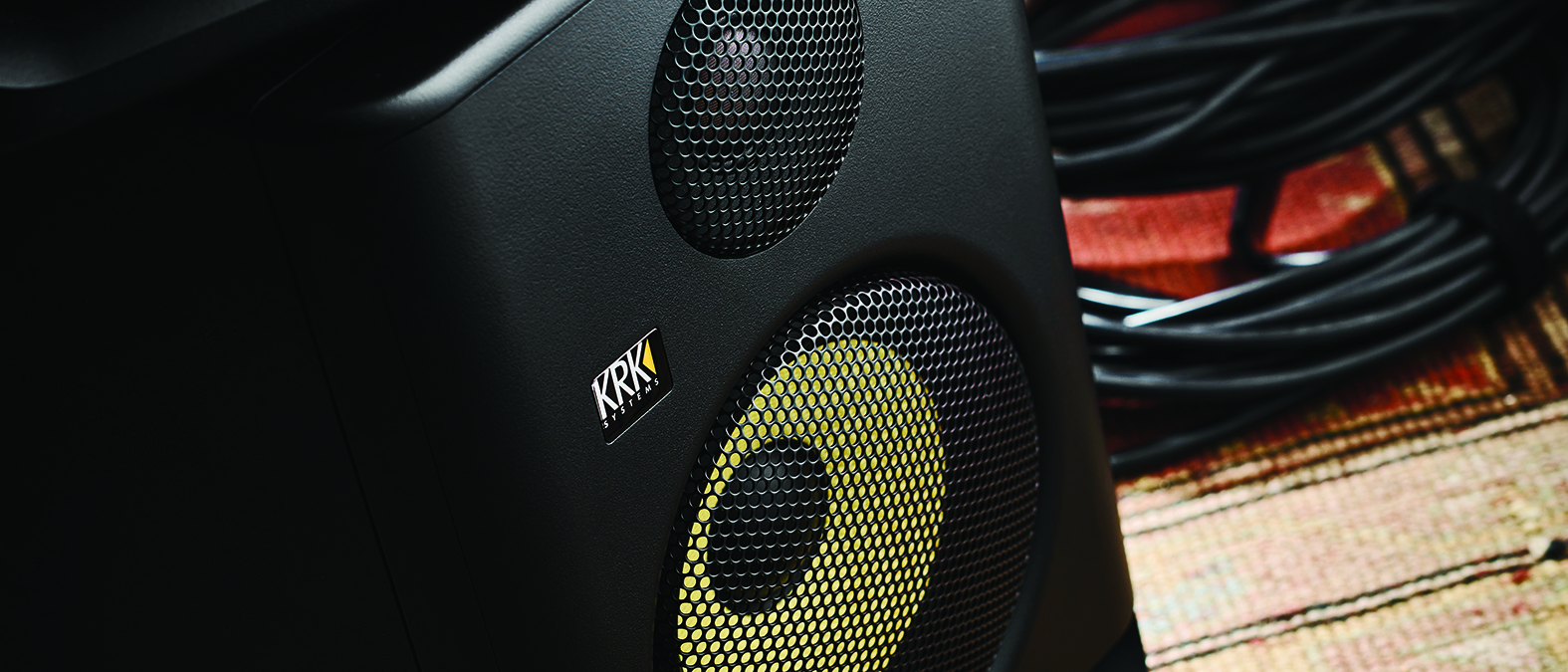MusicRadar Verdict
The latest compact monitor offers a more refined delivery than its predecessor, with flexible EQ to meet various usage scenarios.
Pros
- +
New silk dome tweeter.
- +
Three preset EQ voicings for common applications.
- +
Flexible 2-part mounting pads.
- +
Choice of faceplates.
- +
Well-tuned flat monitor sound.
- +
Good value.
Cons
- -
Low-mids can be a little light in some modes.
MusicRadar's got your back
KRK Rokit 5 G5: What is it?
KRK’s Rokit series is one of the most established monitor ranges, and although very affordable and considerably cheaper than its flagship V Series, they offer great sonics and decent features.
The new fifth generation release has three models built around 5”, 7” and 8” woofers, and it’s the smallest Rokit 5 Generation Five we have for review. Before we get started, it’s worth mentioning that although these monitors replace the fourth generation Rokits, the third generation Rokits are still available and are known as the Classic Series. So if you’d rather have physical controls and Class A/B amplification at a similar price point, it’s worth bearing these in mind.

KRK Rokit 5 G5: Performance and verdict
The Rokit 5 G5 is a 2-way front-ported, bi-amped monitor with Class D amplification. At first glance it looks very similar to its predecessor, and once again speaker volume and EQ are both accessed via the rear menu-driven LCD screen and rotary encoder. Even so, there are some changes, most notably the 1” silk dome tweeter. The monitor ships with two detachable baffle faceplates so you can have either open or grille-covered cones. In the box, you’ll also find a 2-part foam-mounting pad. These shallow wedge-shaped pads allow for various mounting angles, and if you stack them appropriately can also be flat. For regular table or stand mounting you’ll find the speakers also include a thin, high-density foam pad glued to the underside, while for bracket mounting there are mounting screw holes on the bottom.

The EQ option is split into high and low frequency bands and within these bands there are five preset options for each. The EQ is aimed at typical room tuning and boundary correction duties and offers cut/boost at fixed frequency points – 60Hz shelf and 200Hz peak for the low band, and 3.5kHz peak and 10kHz shelf for the high band.
In addition, and new to this generation, there are three global voicings: Mix, Focus and Create. As you might expect, Mix mode is flat, and thus provides the Rokit 5’s intended studio monitoring sound. In this mode, and not unusual for smaller front-ported monitors, the low frequency punch delivered by the port leaves the low mids feeling slightly light. Even so, it’s not a big worry, and if you do want a fuller sound and crisper highs, then this is what Create mode delivers. This mode also doubles as a great general listening/hi-fi setting. Rounding things off, Focus mode emphasises the midrange. This isn’t suited to mixing, but is definitely handy when editing, and it’s ideal for dialogue projects. Cycling between the three modes is very easy using the LCD encoder, and this certainly facilitates changing modes for specific tasks.
The Rokit 5 Generation Five is ideal for smaller rooms and spaces and also suitable for surround applications. The new soft dome tweeter adds finesse to the top end and although there is plenty of scope to apply EQ, we really didn’t feel the need to move that far from the factory flat setting, which is very encouraging. Overall, this is a great speaker and should definitely be on your audition shortlist.
MusicRadar verdict: The latest compact monitor offers a more refined delivery than its predecessor, with flexible EQ to meet various usage scenarios.
Want all the hottest music and gear news, reviews, deals, features and more, direct to your inbox? Sign up here.
KRK Rokit 5 G5: The web says
"The ROKIT 5 Generation Five studio monitors offer a remarkable blend of style, performance, and value, especially for newcomers to music production or those aiming to enhance their home studio affordably."
Magnetic Magazine
KRK Rokit 5 G5: Hands-on demos
KRK Music

The DJs Guru
Sweetwater
Polo Tremolo
KRK Rokit 5 G5: Specifications
- KEY FEATURES: LF Driver: 5” woven Kevlar aramid HF Driver: 1” silk dome copper cap Crossover Freq: 2.27kHz Class D Amplification: HF 20 Watts, LF 35 Watts Total Dynamic Power: 130 Watts Max. SPL: 104dB (@1m) Input: balanced XLR, TRS combo connector EQ: High 10kHz shelf +/- 2dB, 3.5kHz peak +/- 1dB, Low 60Hz shelf +2, -3dB, 200Hz -2dB peak.
- CONTACT: KRK
Jon is a London based platinum award winning mixer, producer, composer and club remixer with a diverse CV that spans dance, pop, rock and music for media. He’s also a long term contributor to MusicRadar's music technology tutorials and reviews. Whether working alone or collaborating he usually handles final mixdowns, so you’ll also find MusicRadar peppered with his handy mixing tips.




